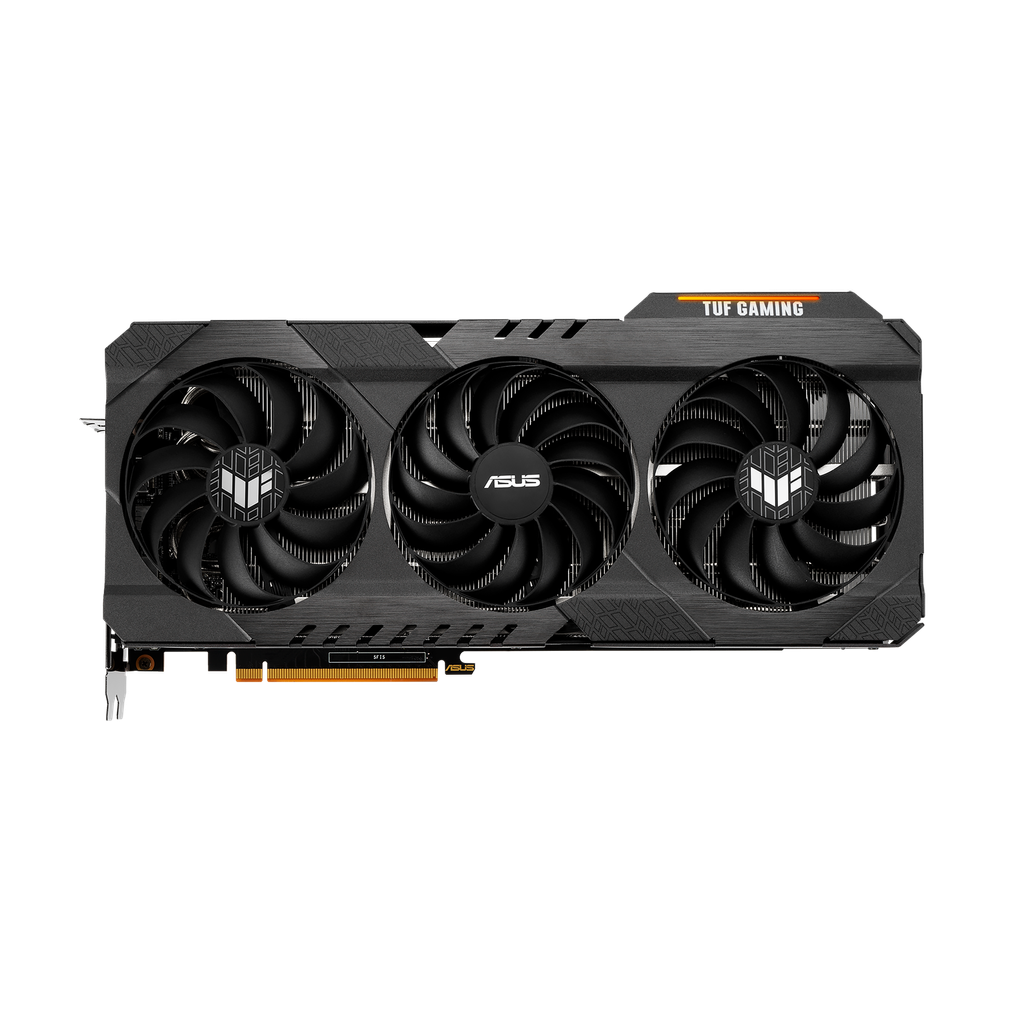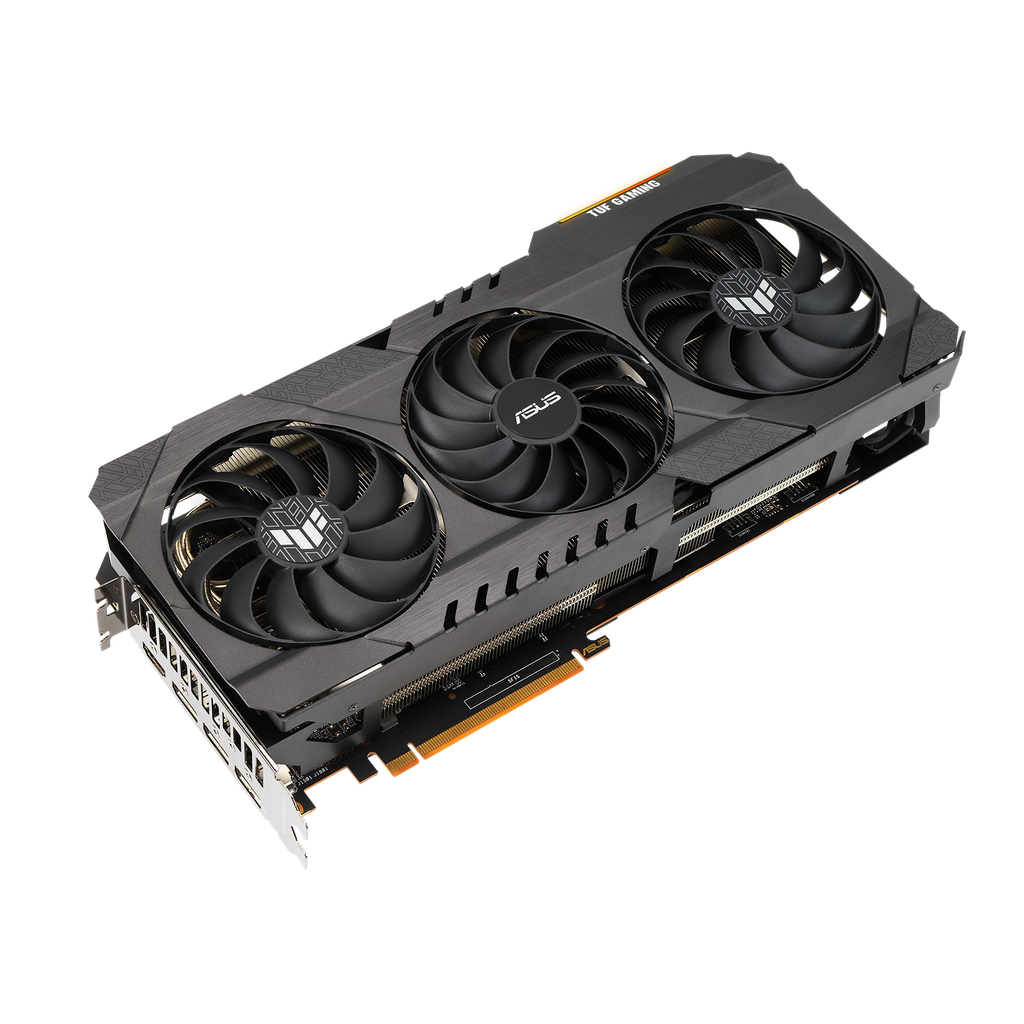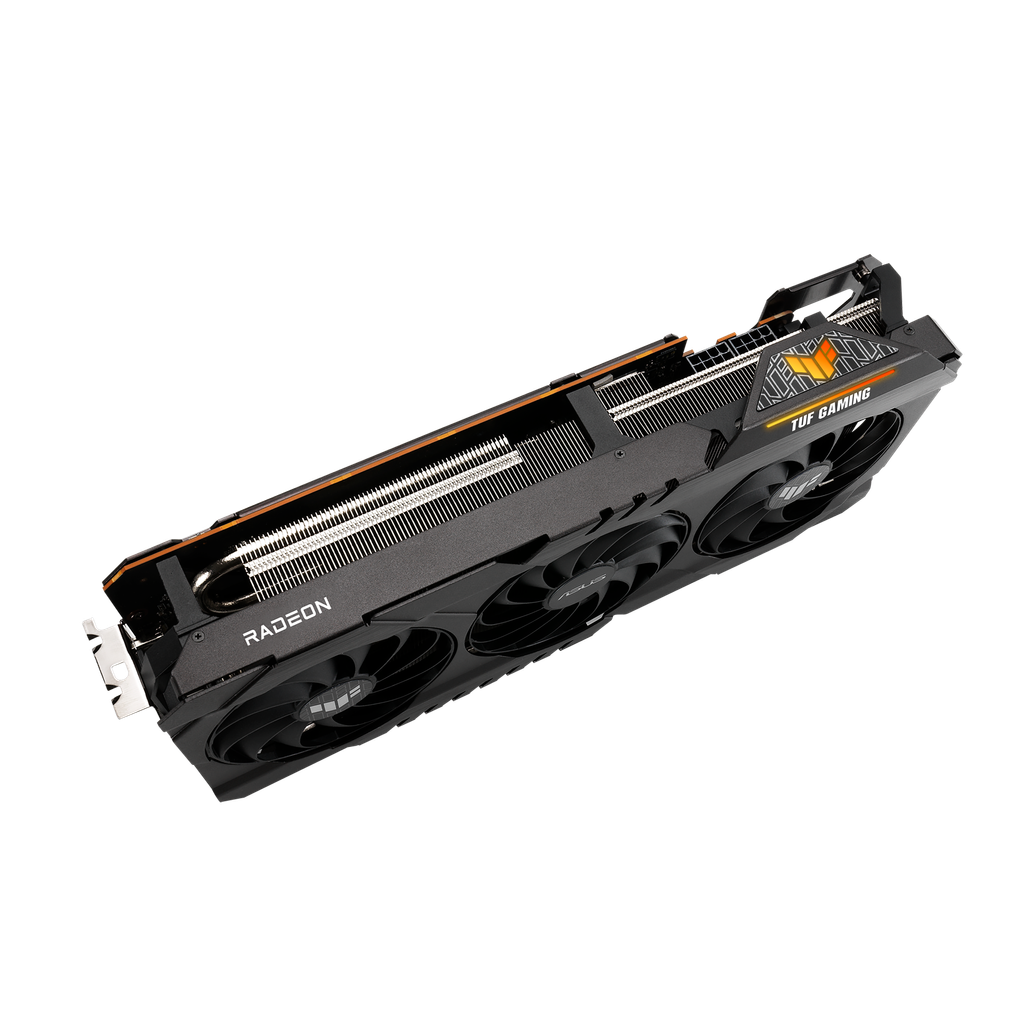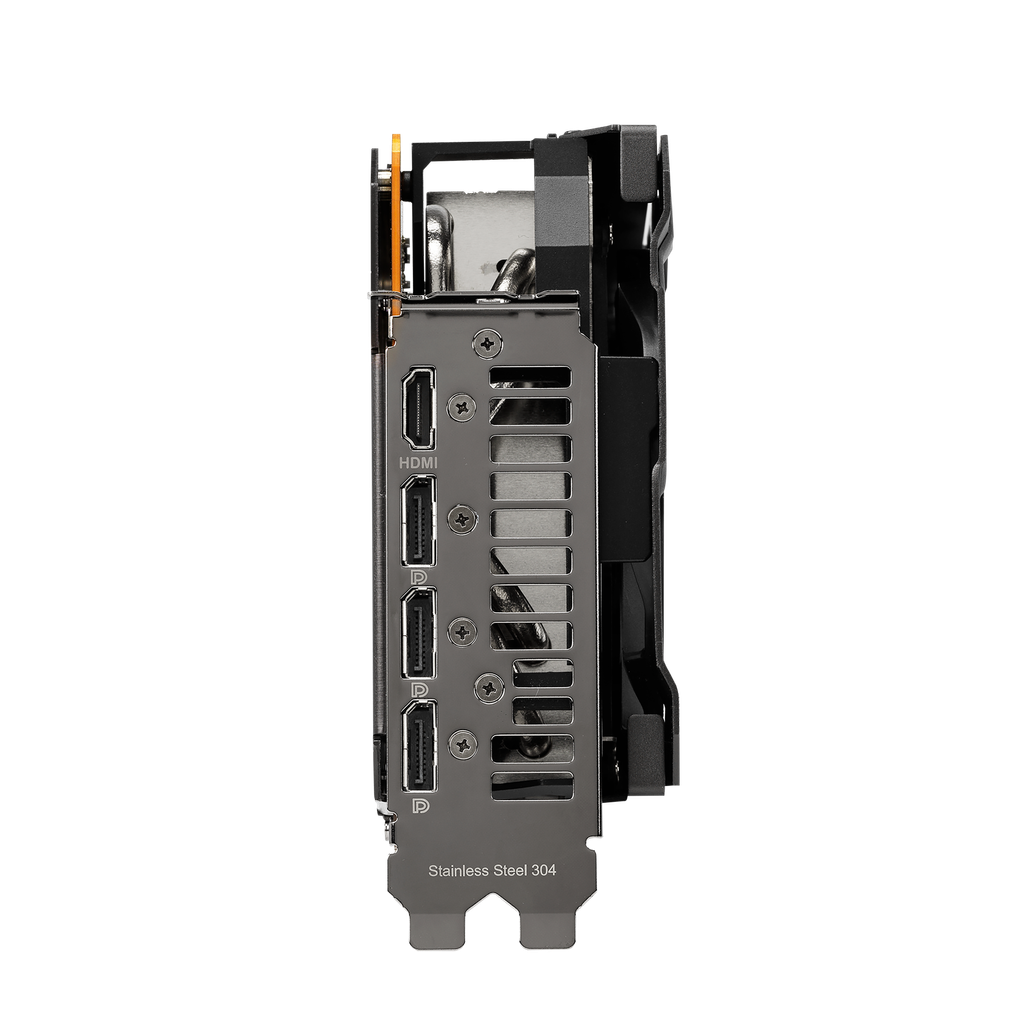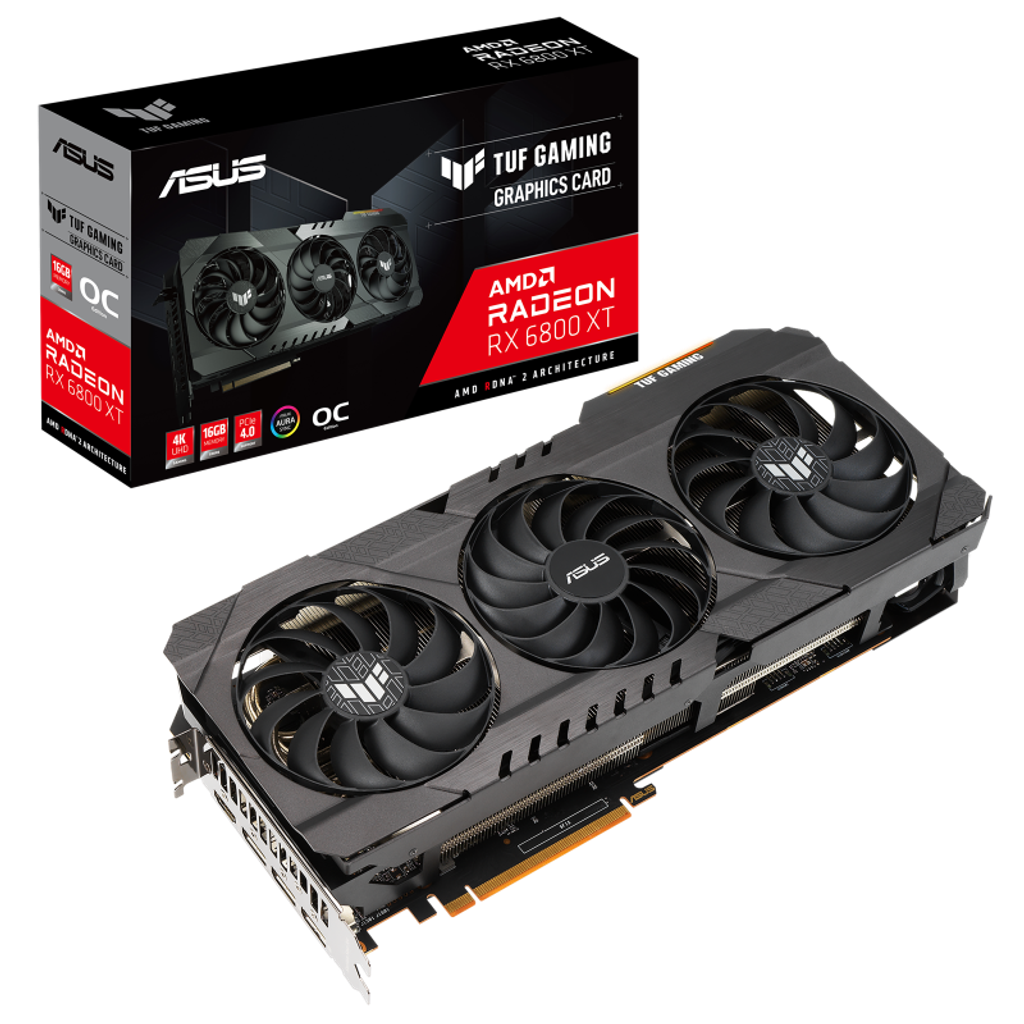ASUS TUF GAMING RADEON RX 6800 XT OC 16GB GDDR6 GAMING GRAPHIC CARD
ASUS TUF GAMING Radeon™ RX 6800 XT is a truly tenacious performer
- Axial-tech fan design has been enhanced with more fan blades and a new rotation scheme.
- Dual ball fan bearings can last up to twice as long as sleeve bearing designs.
- An all-aluminum shroud, reinforced frame, and metal backplate enhance durability.
- MaxContact heat spreader features a super flat surface for improved thermal transfer.
- A 144-hour validation program puts cards through a series of stringent tests to ensure compatibility with the latest games.
- A vented backplate prevents hot air from recirculating through the cooling array.
- GPU Tweak II provides intuitive performance tweaking, thermal controls, and system monitoring.
Graphic Engine
AMD Radeon RX 6800 XT
Bus Standard
PCI Express 4.0
OpenGL
OpenGL®4.6
Video Memory
16GB GDDR6
Engine Clock
OC mode : Up to 2340 MHz (Boost Clock)/ Up to 2090 MHz (Game Clock)
Gaming mode : Up to 2310 MHz (Boost Clock)/ Up to 2065 MHz (Game Clock)
Stream Processors
4608
Memory Speed
16 Gbps
Memory Interface
256-bit
Resolution
Digital Max Resolution 7680 x 4320
Interface
Yes x 1 (Native HDMI 2.1)
Yes x 3 (Native DisplayPort 1.4a)
HDCP Support Yes (2.3)
Maximum Display Support
4
NVlink/ Crossfire Support
Yes
Accessories
1 x TUF certificate of Reliability
1 x Collection card
1 x Speedsetup manual
1 x ASUS ruler
Software
ASUS GPU Tweak II & Drivers: please download all software from the support site.
Dimensions
13 " x 5.52 " x 2.28 " Inch
32 x 14.02 x 5.78 Centimeter
Recommended PSU
750W
Power Connectors
2 x 8-pin
Slot
2.9 Slot
Note
* Crossfire Support - Yes for DirecX® 12 and Vulkan®
* ‘Game Clock’ is the expected GPU clock when running typical gaming applications, set to typical TGP (Total Graphics Power). Actual individual game clock results may vary.
* ‘Boost Clock’ is the maximum frequency achievable on the GPU running a bursty workload. Boost clock achievability, frequency, and sustainability will vary based on several factors, including but not limited to: thermal conditions and variation in applications and workloads.


